Nature & Parks
[Protection of endangered Species] Wildlife Conservation in Japan
[Biodiversity] Wildlife Conservation in Japan
PROTECTION OF ENDANGERED SPECIES
Despite growing awareness of the importance of protecting endangered species, some species are threatened because of past hunting pressures, habitat degradation or destruction, or toxic agricultural chemicals. The Environment Agency first published the "Red Data Book of Japan" in 1991. Since then, measures have been taken to protect certain endangered species.
The Red Data Book of Japan
For many years, birds and mammals in Japan have been protected under the Wildlife Protection and Hunting Law. However, other wildlife, such as reptiles and insects, were not systematically protected outside protected areas. As the global concern for biological diversity has increased, the Environment Agency has become aware of the importance of protecting entire ecosystem.
In 1986, the Agency established the Wildlife Protection Division within the Nature Conservation Bureau and initiated a study on threatened fauna and flora of Japan. The study on fauna was completed in 1989 and the result was published in 1991 as the "Red Data Book of Japan". The results of this study will be reflected in Japan's future wildlife protection policy.
Number of Japanese Taxa Listed in the Red Data Book of Japan
| Known Japanese Taxa | EX | Ew | Threatened | NT | DD | Number of Threatened species | ||||
|---|---|---|---|---|---|---|---|---|---|---|
| CR | EN | VU | ||||||||
| Animals | Mammal | Approx 200 | 4 | 0 | 11 | 20 | 16 | 16 | 9 | 47 |
| Bird | Approx 700 | 13 | 1 | 17 | 25 | 48 | 16 | 15 | 90 | |
| Reptile | 97 | 0 | 0 | 2 | 5 | 11 | 9 | 1 | 18 | |
| Amphibian | 64 | 0 | 0 | 1 | 4 | 9 | 5 | 0 | 14 | |
| Known Japanese Taxa | EX | Threatened | Rare | Number of Threatened species | ||||||
| EN | VU | |||||||||
| Fresh water fish | 200 | 2 | 16 | 6 | 17 | 22 | ||||
| Insect | 30,146 | 2 | 23 | 15 | 166 | 38 | ||||
| Decapod | 197 | 0 | 0 | 7 | 45 | 7 | ||||
| Land or fresh water snail | 824 | 0 | 34 | 39 | 54 | 73 | ||||
| Other invertebrate | 4,040 | 0 | 4 | 3 | 11 | 7 | ||||
| Known Japanese Taxa | EX | Ew | Threatened | NT | DD | Number of Threatened species | ||||
| CR | EN | VU | ||||||||
| Plants | Vascular plant | 7,087 | 17 | 12 | 471 | 410 | 518 | 108 | 365 | 1,399 |
| Moss | Approx 1,800 | 0 | 0 | 110 | 70 | 4 | 54 | 180 | ||
| Liverwurst | Approx 5,500 | 5 | 2 | 34 | 6 | 24 | 0 | 40 | ||
| Lichen | Approx 1,000 | 3 | 0 | 22 | 23 | 17 | 17 | 45 | ||
| Fungus | Approx16,500 | 28 | 1 | 51 | 11 | 0 | 0 | 62 | ||
| Total 2,042 | ||||||||||
EX: Extinct Ew: Extinct in the Wild, TH: Threatened, CR: Critically Endangered, EN: Endangered, VU: Vulnerable, NT: Near Threatened, DD: Data Deficient
| Mammals assigned as 'Critically Endangered' |
Felis bengalensis euptilura, Lutra lutra, Zalophus californiaus, etc. | 11 Taxa |
|---|---|---|
| Birds assigned as 'Critically Endangered' |
Phelacrocorax urile, Ciconia boyciana, Synthliboramphus antiquus, Bubo bubo, etc. | 17 Taxa |
| Reptile assigned as 'Critically Endangered' |
Goniurosaurus kuroiwae toyami, Opisthotropis kikuzatoi | 2 Taxa |
| Amphibian assigned as 'Critically Endangered' |
Hynobius abei | 1 Taxa |
| Vascular plants assigned as 'Critically Endangered' |
Cyrtomium macrophllyum var. microindusium, Lycopodium carolinianum, Ranunculus kazusensis, Polemonium kiushianum, etc. | 471 Taxa |
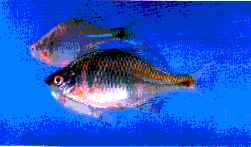
Phodeus ocellatus smithi
(Japanese rose bittering)
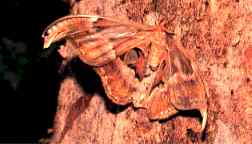
Attacus atlas(Atlas moth)
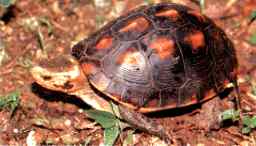
Cuora flavomarginata flavomarginata
(Yellow-marginated box turtle)
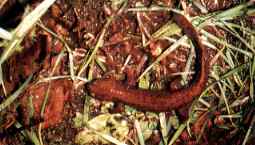
Hynobius takedai (Hokuriku Salamander)
In order to carry out the study, the Agency organized a committee consisting of 13 members. The committee set up nine working groups of experts, each of which consisted of four to ten experts dealing with one of the following taxonomic groups: (1) mammals, (2) birds, (3) reptiles and amphibians, (4) fresh water fish, (5) insects, (6) decapods and snails, (7) other invertebrates, (8) vascular plants, and (9) other plants. Marine mammals were not included in this study.
Over two hundred experts cooperated with local working groups.
At first, researchers compiled lists of taxa native to Japan. (The term "taxa" in this study refers to both species and subspecies, except for insects where subspecies are not included.)
Researchers recorded the location and habitat type for each taxon, records that include the location of the prefectures and/or islands. The expert groups identified threatened taxa and assigned them to categories indicating the severity of the threat. The categories defined were the same as those used by the IUCN, World Conservation Union, at the time: Extinct (Ex); Endangered (E); Vulnerable (V); and Rare (R).
In 1989 the Nature Conservation Society of Japan in collaboration with WWF-Japan published the "Red Data Book of Japanese Vascular Plants" that made use of three categories ("Ex" "E" and "V"). In 1993, the Agency initiated the study to publish the "Red Data Book of Japanese Plants (including nonvascular plants)" in collaboration with the Japanese Society of Botanical Taxonomy.
In 1994, IUCN announced a new set of categories to replace the old one and published a new Red List two years later. The introduction of the new categories for national Red List is currently being reviewed by the Agency.
Protection of Endangered Species
In order to protect endangered species, the Environment Agency, prefectural governments, and academics collaborating with non-governmental organizations have implemented artificial breeding programs, feeding programs, habitat improvement programs, and continuous and systematized research programs. These endangered species include Nipponia nippon (Japanese crested ibis), Felis iriomotensis (Iriomote wildcat), Diomedea albatrus (short-tailed albatross), Ketupa blakistoni blakistoni (Blakiston's fish-owl), Grus japonensis (Japanese crane), Felis euptilure (Tushima cat), Uria aalge (common guillemot), Rhodeus ocellatus smithi (Japanese rose bitterling), and Hynobius takedai (Hokuriku salamander).
Natural Habitat Conservation Areas
Natural Habitat Conservation Areas are designated to protect the habitat of NES specified the by Law for the Conservation of Endangered Species of Wild Fauna and Flora (LCES). The Areas are divided into Managed Areas and Monitoring Areas. Restricted Areas can be established in Managed Areas if further protection is necessary.
By 1998, six Natural Habitat Conservation Areas (totaling 860.28 ha) were designated for Tanakia tanago (a kind of bitterling), Callianthemum insigne var. hondoense (alpine herbaceous plant), Libellula angelina (a kind of dragonfly), Polemonium kiushianum (herbaceous plant), and Opisthotropis kikuzatoi (Kikuzato's stream snake).
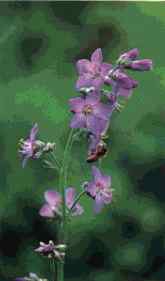 Polemonium kiushianum (Jacob's ladder)
Polemonium kiushianum (Jacob's ladder)
Polemonium kiushianum,a type of perennial herb, occurs in a limited area of the Aso district in Kyushu. It had previously grown in pastures that were artificially maintained.
However, the habitat for this herb has deteriorated because of the changes in the farming methods. Currently, two areas have been designated as Natural Habitat Conservation Areas under the LCES. To protect the habitat, research projects are being carried out to improve growing conditions and the grass is mowed regularly.
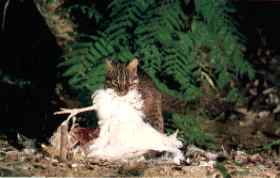 Felis iriomotensis (Iriomote wildcat)
Felis iriomotensis (Iriomote wildcat)
Felis iriomotensis is endemic to Iriomote Island, which is located 200 km east of Taiwan. The wildcat population is estimated at about 100 individuals. A part of their habitat has been designated as a National Park and was recently established as a Protection Area for Birds and Mammals. The Agency has been monitoring wildcat population through a feeding program. There is also a campaign to prevent the cat from feeding on road kill.
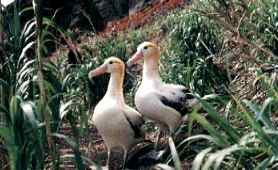 Diomedea albatrus (Short-tailed albatross)
Diomedea albatrus (Short-tailed albatross)
Torishima Island, located 600 km south of Tokyo, is known as the most significant breeding site of the albatross. Access to the island is restricted for protection of the species. Albatross eggs are often damaged by erosion because the ground is sandy. Since 1981, the Agency has been carrying out erosion control programs to protect Albatross nests and eggs. In 1992, the Agency initiated a project to attract young individuals with decoys to establish a new breeding site at location with more stable groundcover. The population has now recovered to approximately 900 individuals.In 1996, research using a satellite to track the albatross was initiated to define the flyway.
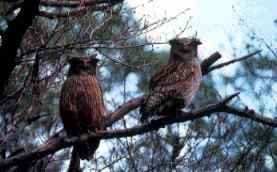 Ketupa blakistoni blakistoni (Blakiston's fish-owl) (Blakiston's fish-owl)A large owl subspecies, Ketupa blakistoni blakistoni, lives in eastern Hokkaido, Japan's northernmost island. The population is estimated to be no more than 100 individuals. Feeding and nesting conditions have been steadily deteriorating and the Agency began implementing the following emergency measures in 1984.(a) Erecting nest boxes in suitable habitats(b) Relocating young individuals to stimulate pairing(c) Releasing trout and other fish in feeding ponds(d) Placing trout and other fish in bird feeders.
Ketupa blakistoni blakistoni (Blakiston's fish-owl) (Blakiston's fish-owl)A large owl subspecies, Ketupa blakistoni blakistoni, lives in eastern Hokkaido, Japan's northernmost island. The population is estimated to be no more than 100 individuals. Feeding and nesting conditions have been steadily deteriorating and the Agency began implementing the following emergency measures in 1984.(a) Erecting nest boxes in suitable habitats(b) Relocating young individuals to stimulate pairing(c) Releasing trout and other fish in feeding ponds(d) Placing trout and other fish in bird feeders.
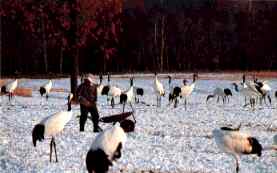 Grus japonensis (Japanese crane)
Grus japonensis (Japanese crane)
Grus japonensis lives and breeds in and around the Kushiro marsh, which is listed as a Wetland of International Importance of the Ramsar Convention and is designated as a National Park. In collaboration with local volunteers, the Environment Agency has continued to feed the cranes during winter to supplement natural food sources. As a result, the population has increased from 33 in 1952 to approximately 600. Also, several zoological gardens are managing a number of artificial breeding programs.
Ministry of the Environment Government of Japan